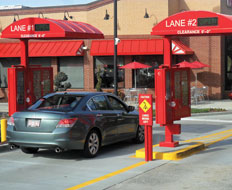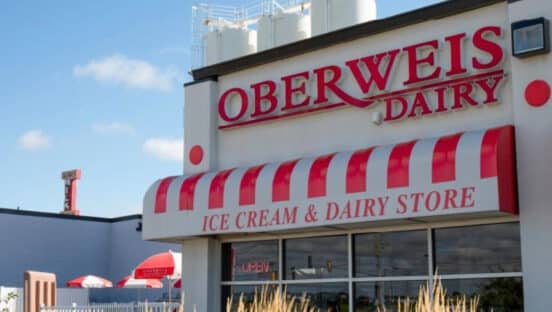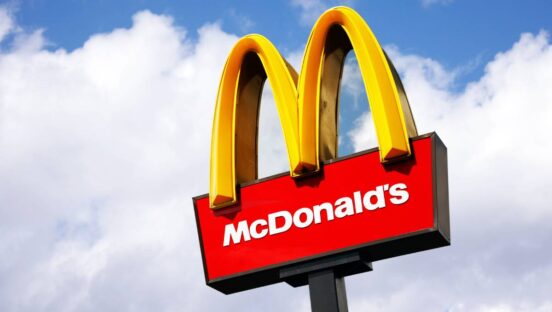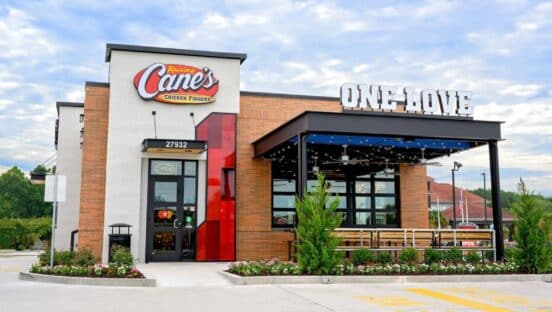Tony Holmes had a problem: The drive thru at his high-traffic Chick-fil-A restaurant in Apex, North Carolina, was too crowded.
For nearly two years, he tried line busting with employees outside wearing headsets. Then he gave those employees handheld remote units to streamline ordering. Both methods helped alleviate the drive thru’s bottleneck, but there were other issues that technology and manpower couldn’t address.
So in November, Holmes installed a dual drive-thru lane.
“I recognized pretty early on from a volume standpoint that our drive thru had hit a lid, so to speak,” says Holmes, whose unit does an average 1,800 transactions a day. “We were at maximum capacity for lots of different reasons.”
The crowded, one-lane system was causing many customers to reach the dreaded turn-away point. “It’s an intuitive thing,” Holmes says. “People see that line and think, ‘I’m going to park and go inside,’ or ‘I’m going to go somewhere else.’”
A restaurant has a big problem if customers drive up and consider leaving, says Darren Tristano, executive vice president of Technomic, a restaurant consulting and research firm. “Every restaurant is marketing to get customers,” he says. “If you can’t manage them in an efficient manner, then you’ll lose that marketing effort, and you’re going to lose out on those customers. That is critically important to surviving today.”
Adam Noyes is the chief restaurant operations officer at Checkers/Rally’s. He says the chain is the biggest dual drive-thru concept in the country, with 85–90 percent of its locations featuring double drive thrus.
Noyes says that for operators who decide dual drive thrus are the best approach for their brand, it’s essential both lanes stay open during operating hours. “And if you’re going to have a double drive thru, you’ve got to have the technology, people systems, and training to be able to deliver on that experience,” he says. He adds that there is a learning curve for both staff and customers when installing dual drive thrus.
“When guests pull up to the passenger side [drive thru], that side is better designed for those with multiple guests, because you have to reach across,” Noyes says. “But that’s really the only negative. Our guests have learned that when you’re going to that side, it can be fun because they let the child pay and it’s a different experience. They turn that negative into a positive.”
Holmes’s parking lot isn’t backed up anymore, but he still has difficulties with the drive thru. His dual drive thru’s lanes each have a speaker box and menuboard, and merge into one lane up to the window, where guests pay for and receive their food. While his bottleneck used to be at the speaker box, it’s now at the window, an issue common with dual lanes that merge.
Holmes has increased staffing, not only to operate the drive thru, but also because traffic has increased inside the store. He says he doesn’t mind the extra staff. “What we’re able to do now is spend a little more time on service with guests, more than what we could before,” he says. “It changes the dynamic, but also gives you a better opportunity to serve guests.”
Noyes says extra staff when adding a second drive-thru lane can decrease the stress factor for all parties. “It gives the employees the opportunity to stop and be sure that they’re being friendly to the guests,” he says. “Sometimes when they’re doing so many things, they get overwhelmed and forget that hospitality piece.”
Cross-training staff is also imperative when operating a dual drive thru, Noyes says. “Being sure that an employee can easily slide over and help take an order or help bag an order, that’s another key piece so that you’re as efficient and productive as possible,” he says.
While there are a few negatives to the dual drive thru—including additional training, technology, and costs—it can be a boon to business if done correctly, Noyes says. “When guests pull up to our lot and see that they can choose between one lane or two, the perception is that it’s going to be a faster experience.”
For Holmes, a second drive-thru lane has produced tangible results. When his drive thru was a single lane, the maximum number of cars he could get through in a day was 123; with a second lane, that number has jumped to 143. In addition, revenue has increased 20 percent in two months, and his unit has moved up 150 spots in overall system rankings for the peak dayparts of lunch and dinner.
“From a volume standpoint, we’ve seen a good bump,” he says. “I was probably on a 7 percent increase for the year, and we [went] up 10–12 percent in November and December.”
While much of Checker’s/Rally’s business comes from dual drive thrus, Noyes says the option doesn’t work for every brand or location. To be more flexible, he says, the chain now offers franchisees a choice between dual-lane and traditional single-lane drive thrus.
“At the end of the day, it’s about convenience to the guests. How it’s delivered isn’t as critical,” Noyes says. Lately, new growth for the brand has been in urban centers such as New York City, where drive thrus aren’t possible—or even necessary.
“For us to get our brand in as many places where our guests want it, we need to be able to execute in many ways. Dual drive thrus are just one piece,” he says. “The question is, How do you grow your brand? There are many avenues to be able to do that.”













